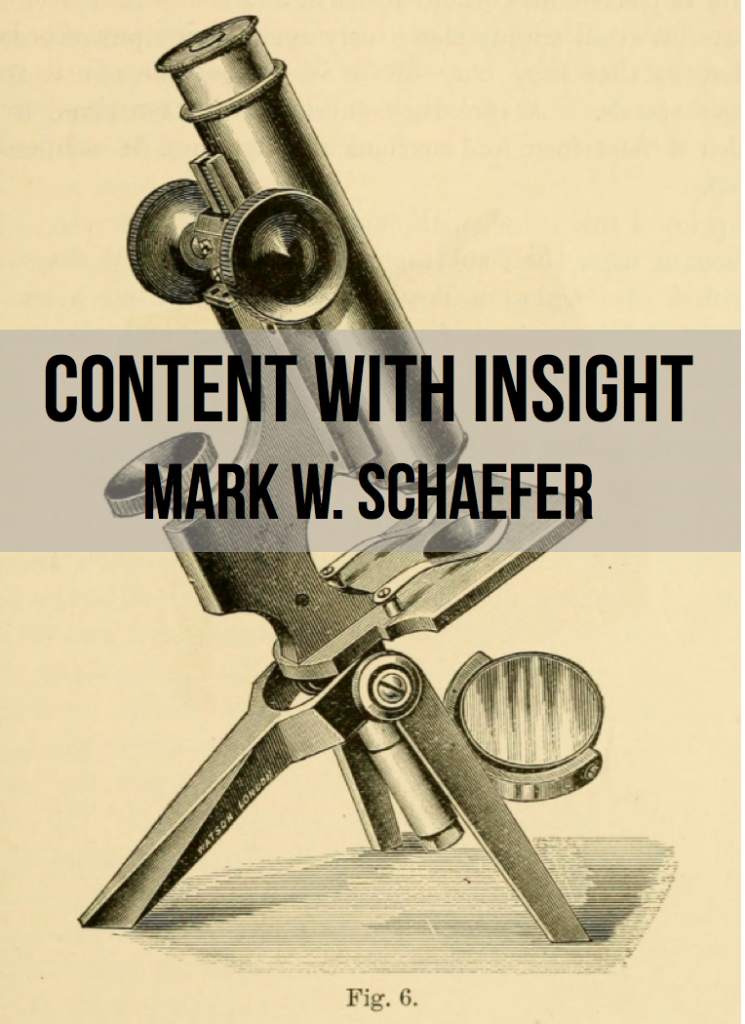
By Mark Schaefer
A great way to initiate your content marketing strategy is to “start with answers and end with insights.” Let’s unpack that idea.
A few years ago, YouTube came out with a white paper stating that companies doing the best job building brands on the web used three different kinds of content:
Hygiene — The “everyday content” that answers common customer questions
Hub — Content that creates authority through evergreen storytelling
Hero — Epic content that goes viral.
You can read about how these content types relate to SEO here.
If you’re in a niche without much competition, an easy way to begin creating content is brainstorming every question you can dream of related to your sustainable interest, and then publishing the answers through a blog, video, or podcast. This is an effective way to dominate an uncontested niche and possibly attract search engine attention through “hygiene” content.
Here’s a trick to get you going. Go to a website called AnswerThePublic.com. On this site, you can type in keywords related to your sustainable interest and it delivers questions people are typing into Google about your topic. Essentially, it’s a content idea generator!
When answers aren’t enough
Answering customer questions is a solid strategy for beginners, but not ideal in every situation, especially in a more crowded content niche. In that situation, you need to focus on “insights” instead of just “answers.”
For example, I often write on the topic of marketing strategy. I consulted with AnswerThePublic.com and it determined that a popular topic for me to answer would be “Why Social Media is Important.” I googled this phrase and it generated 255 million results. That’s an incredibly saturated topic. If I wrote a blog post to answer that question, I would only be contributing to the noise!
A move to insights
Rand Fishkin
For me to become known in that information-dense environment, I’d have to do something bolder, like offering “hub” content – case studies, insights, and strategies you won’t find anywhere else. Rand Fishkin (the “Wizard of Moz,”) uses a similar strategy. The world of search engine optimization is overrun with content that is “answers to questions.” Fishkin uses his insightful “Whiteboard Friday” video series to establish thought leadership on marketing and SEO strategy.
Another advantage of the more in-depth hub content is that it’s more likely to keep readers (or viewers) on your site. With hygiene content, once people get an answer to their question, they’ll leave your site and go back to their lives. Hub content is more likely to attract readers who will stay and look around to learn more.
Here are three individuals who are becoming known through diverse and insightful “hub” content that goes beyond the ordinary “answers to questions:”
-
Mimi Thorisson
Mimi Thorisson became a celebrity in the highly-competitive world of food blogging by combining astonishing photography, art, and recipes in a blog called “Manger” (French for “to eat”). Her consistent and beautiful work has led to a television show, book, and speaking appearances.
- On the site “IQuantNY,” statistician Ben Wellington takes publicly available data and tells the story of what it means to citizens of New York. His blog provides fascinating revelations about the city’s budget, sewage, parks, and nightlife, among other topics. The popular blog has helped propel his career as an educator and analyst.
- “Momastery”is a mommy blog about “unleashing the sister warrior.” Blogger Glennon Doyle Melton brings her extraordinary heart, humor, and bravery to her storytelling, which she has leveraged into best-selling books and a successful speaking career.
Answering questions is a great place to start with a content marketing strategy, but consider adding bolder and more insightful types of content over time to grow your actionable audience.
Illustration courtesy Flickr CC and Plaisanter